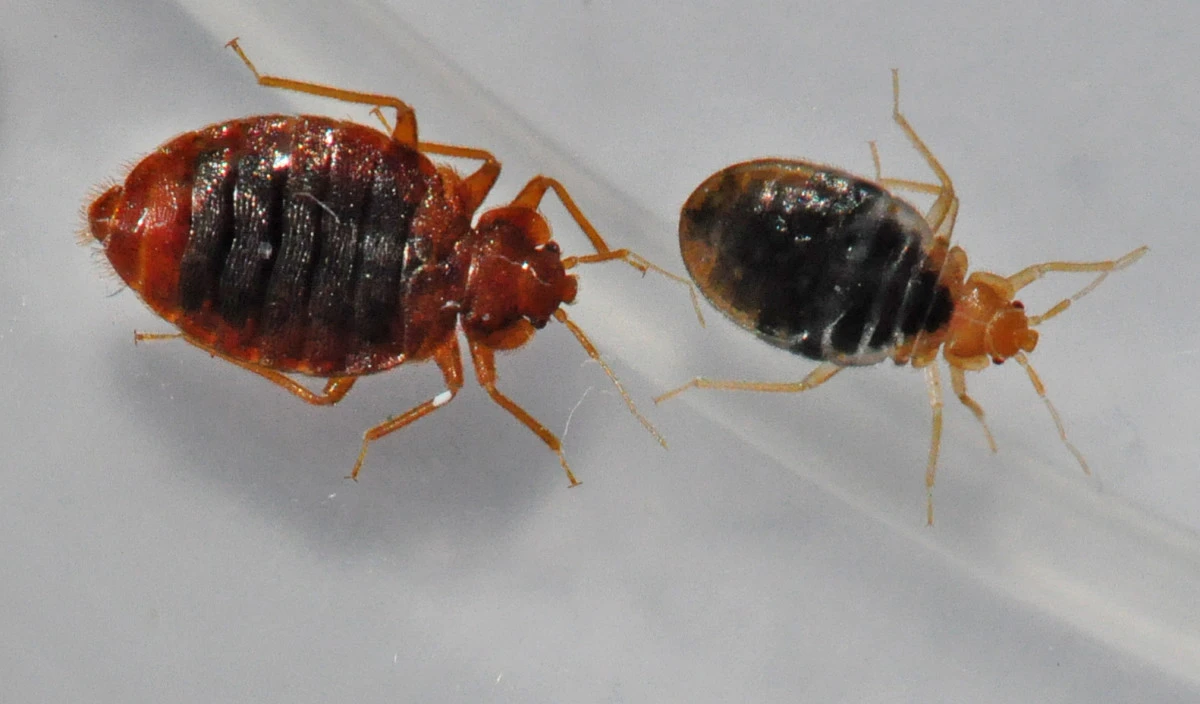Solve problems in and around your home.
Start Problem Solver

You are at an increasing risk of bed bug infestation in your home. Bed bugs are found throughout the world and are becoming more common in New Zealand.
Adult bed bugs are small (3-5mm), oval, wingless parasitic insects. When they have recently fed they will be reddish brown, but when they haven’t fed for some time they will be pale and almost translucent. When just hatched from eggs bed bugs are tiny (only just visible to the naked eye) and pale.
Bed bugs hide in cracks and crevices during the day and come out at night to feed on blood. They are attracted to the food source (us) by body heat and carbon dioxide from our breath. They feed by using their hypodermic like mouth parts to penetrate the skin. They then inject 'saliva' which contains anti-coagulant proteins to stop your blood clotting. When sleeping you are unlikely to feel the bite as it is happening this may be due to the fine nature of the bed bug hypodermic mouth parts or anaesthetic proteins in the bed bug saliva. It is the proteins in the saliva that cause itchy inflammation reactions and reddened marks in about 50% of people they bite. Many of those with bed bug infestations may not be aware of the presence of a bed bugs because they have no reaction to the bites. The first sign of infestation my be blood or bed bug faeces marks (like a tick with a black ballpoint pen) on sheets, find the bugs themselves hiding in seams or when some susceptible person in the house is bitten. There is currently no evidence that bed bugs transmit disease even though pathogens have been found in their gut.
The Bed Bug is wingless (its wings are vestigial - reduced in size and not used) and therefore likely to be found near to where the host sleeps; in the mattress or bed frame, behind wallpaper, in spaces behind skirting, seams of curtains, electrical sockets, under the edge of carpets and in furniture.
Because they ingest up to seven times their own body weight in blood in one feed, they can survive long periods between feeding. After mating takes place, bed bugs will lay up to 200 eggs. The nymphs that hatch out are miniature versions of the adult. There is no larval stage. The nymphs will moult several times over a period of 6-18 months before becoming an adult.
It is not true that bed bugs are a sign of a 'dirty' home. bed bugs will infest the cleanest home, hotel, motel or backpackers. They are easily transported in luggage and other items moved from one sleeping place to another.
Check out how to identify bite marks here.
To get rid of bed bugs follow these steps:
Bed Bugs in Luggage > Bed bugs are often accidentally transported in luggage and clothing. While travelling always check and shake clothes before packing. A light spray of luggage with NO Bed Bugs Total Protection will help prevent your luggage becoming the transport for unwanted hitch-hikers.
Prevent Bed Bug Infestations in the Future > If you have had an infestation it is important to continue preventative treatment for 3 months after the last sighting of a bed bug. Consider how the bed bugs could have been introduced; luggage? Boxes, furniture* or other material brought into the area from other premises? Check these and treat with NO Bed Bugs Total Protection or NO Fleas Total. Clear away clutter in rooms that might provide hiding places for bed bugs. Seal and fill cracks and crevices where bed bugs might find shelter, taking care not to leave spaces where they can hide more difficult to treat.
In high risk places such as hotels, motels, backpackers, and other places people congregate to sleep it is wise to routinely carry out a search for signs of bed bugs so that treatment can be carried out promptly. It may be appropriate to carry out preventative treatment on a regular basis (every two months) where there is high turnover of travelling people who might have come in contact with bed bugs elsewhere.
*Second hand furniture is a common way for bed bugs to be unknowingly moved from one home to another. If you are considering buying any used furniture, or you have purchased some recently, check it carefully and consider treating it with NO Bed Bugs Total Protection spray as a preventative measure.

The complete solution for a bed bug infestation, including a fumigator and concentrated spray.

Dual action control of bed bugs in all life stages by breaking the breeding cycle.

Long–term control and protection from fleas with dual action insecticide and Insect Growth Regulator (IGR) to br…

"Your products are great, easy to use and the instructions are great. At least I managed to not have them spread to other rooms in the house. No more scratching for me."
Adrienne, Auckland